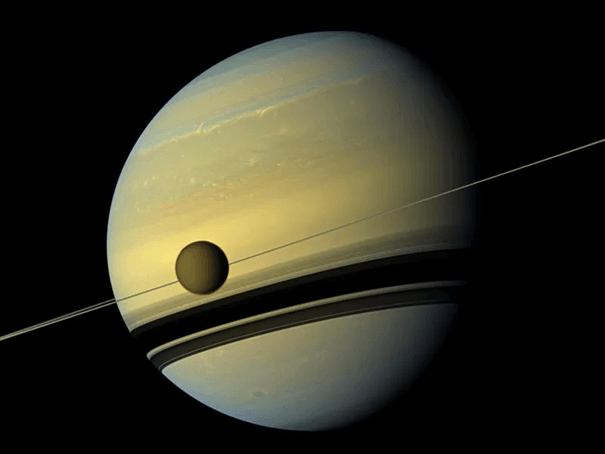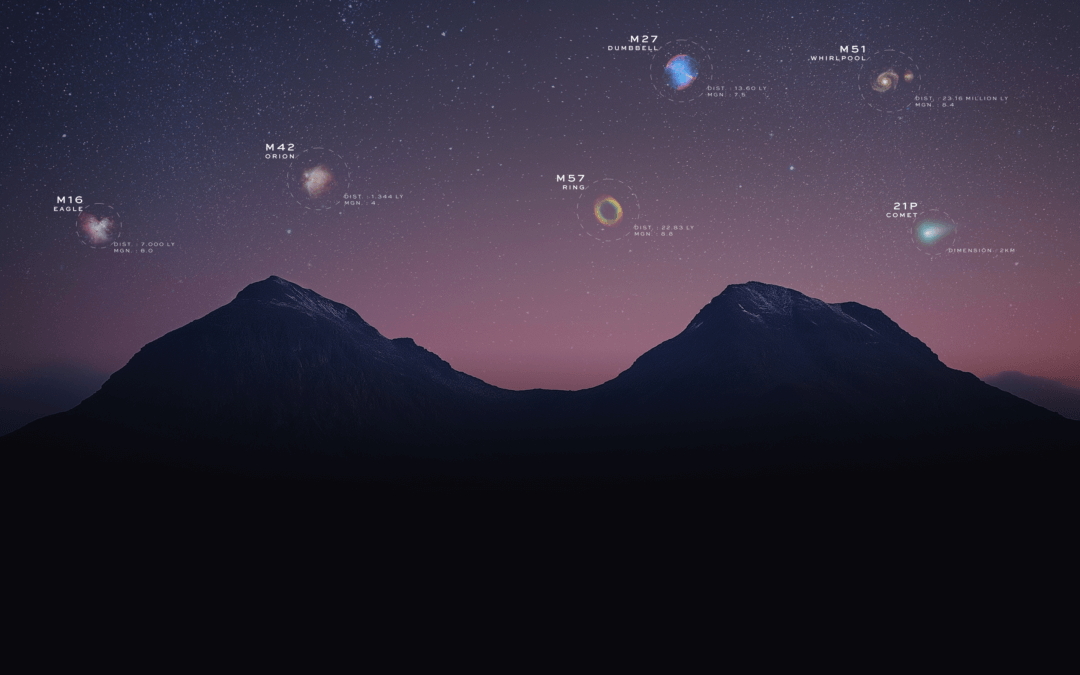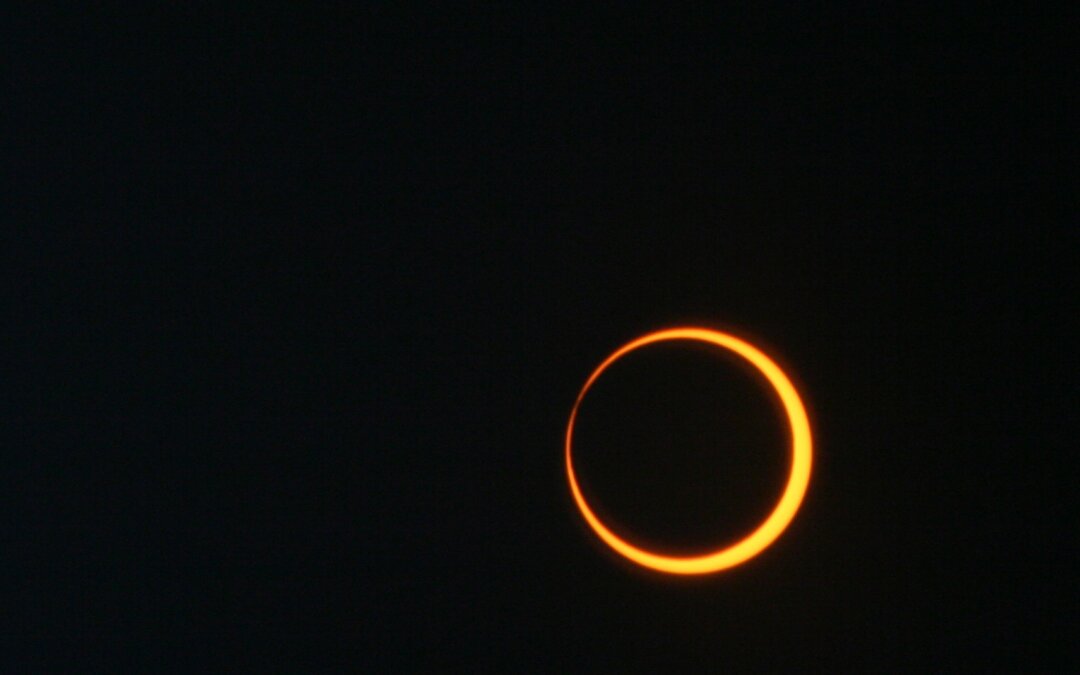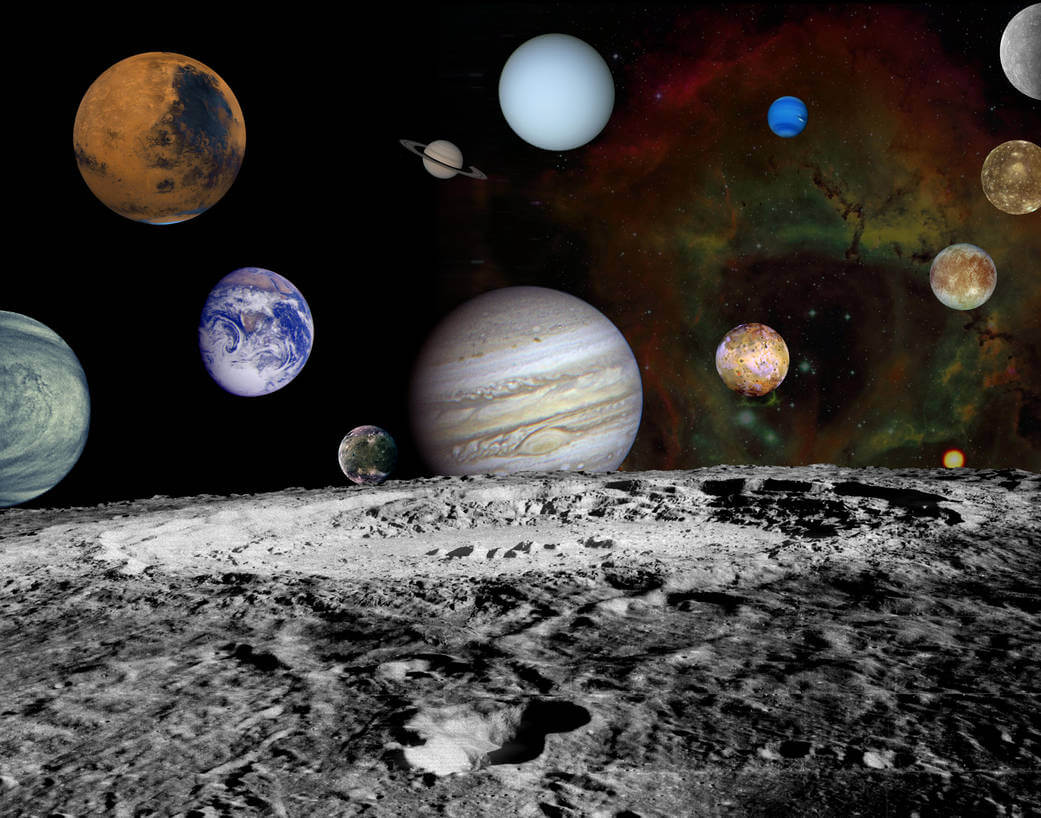In 2022, thousands of global stargazers logged countless hours with their Unistellar Telescopes, exploring the vast expanse of the cosmos. They toured some of the universe’s most spectacular sights, from supernovae to gas giants in our own solar system, all from their own backyards.
Unistellar observers’ favorite targets include nearby Mars and Saturn, as well as aptly-named objects such as the Helix Nebula, the Cigar Galaxy, and the Whirlpool Galaxy. Along with other deep-sky gems, they form a crowdsourced list of some of the most popular objects in the night sky. If you’re looking for new targets to spy in the night sky, or if you just want to revisit some of your favorite sights, consider this the start of your voyage through a cosmic highlight reel.
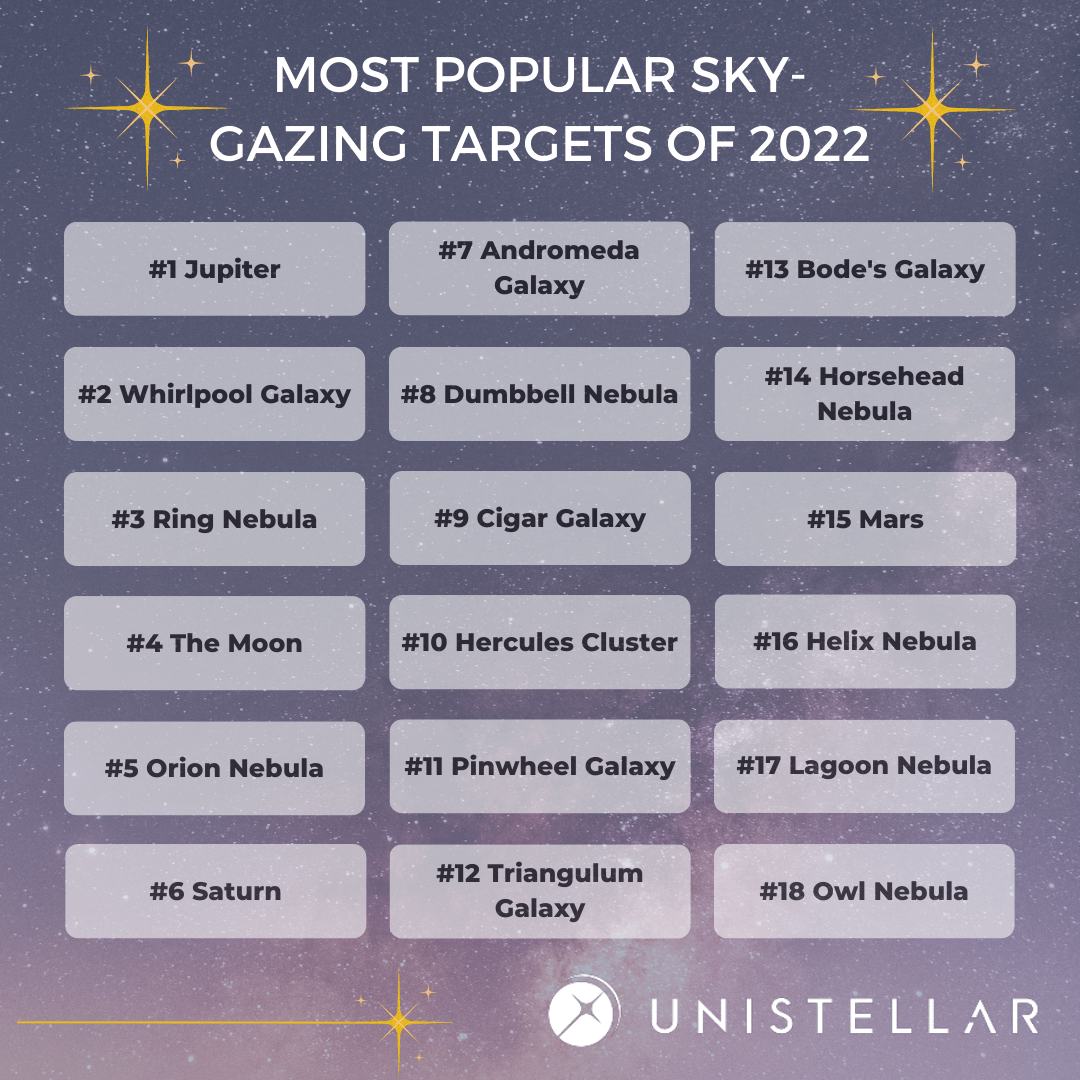
Check out these favorites that are visible now to the Northern Hemisphere:
Owl Nebula
The Owl Nebula is a planetary nebula, also called M97, that can be found near the Big Dipper’s bowl. It was formed when a dying star collapsed and exploded, shedding its outer layers and becoming a white dwarf. The Owl Nebula is estimated to be about 8,000 years old, and it’s still expanding!
If you look closely, you may see two dark spots formed by jets of matter ejected from the dying star. These form the Owl Nebula’s “eyes.”
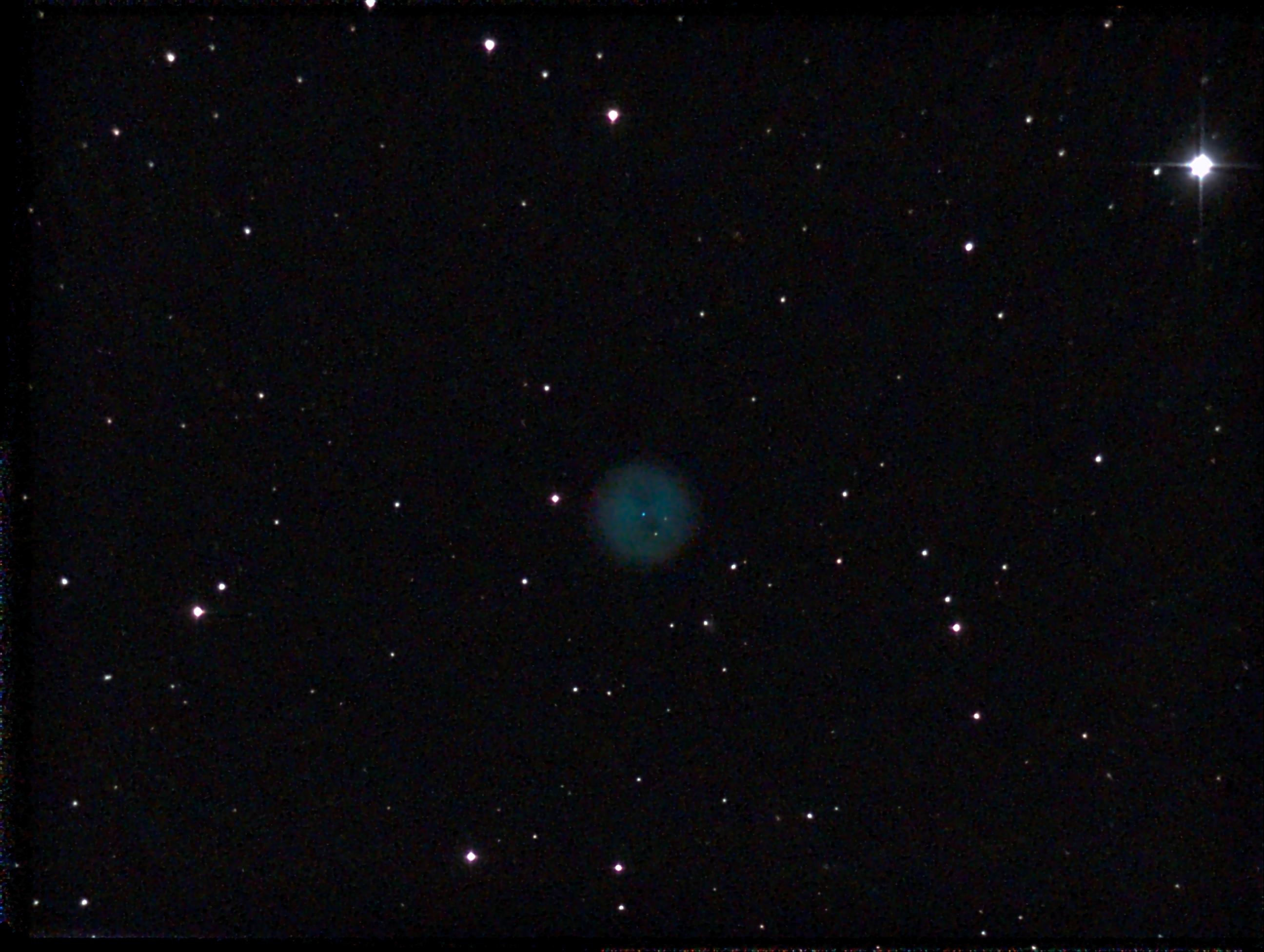
An eVscope image of the Owl Nebula – can you see the Owl’s eyes?
Orion Nebula
Just 1,500 light-years away and bursting with light, the Orion Nebula makes a fantastic skygazing target. This star-forming region contains four young, bright stars at its center, often called the Trapezium, that are responsible for forming the Orion Nebula’s shape with their strong emissions of ultraviolet light.
Also known as M42, the Orion Nebula has been visible to humans for thousands of years and was a popular target among early astronomers. Join them in contemplating this stellar forge.
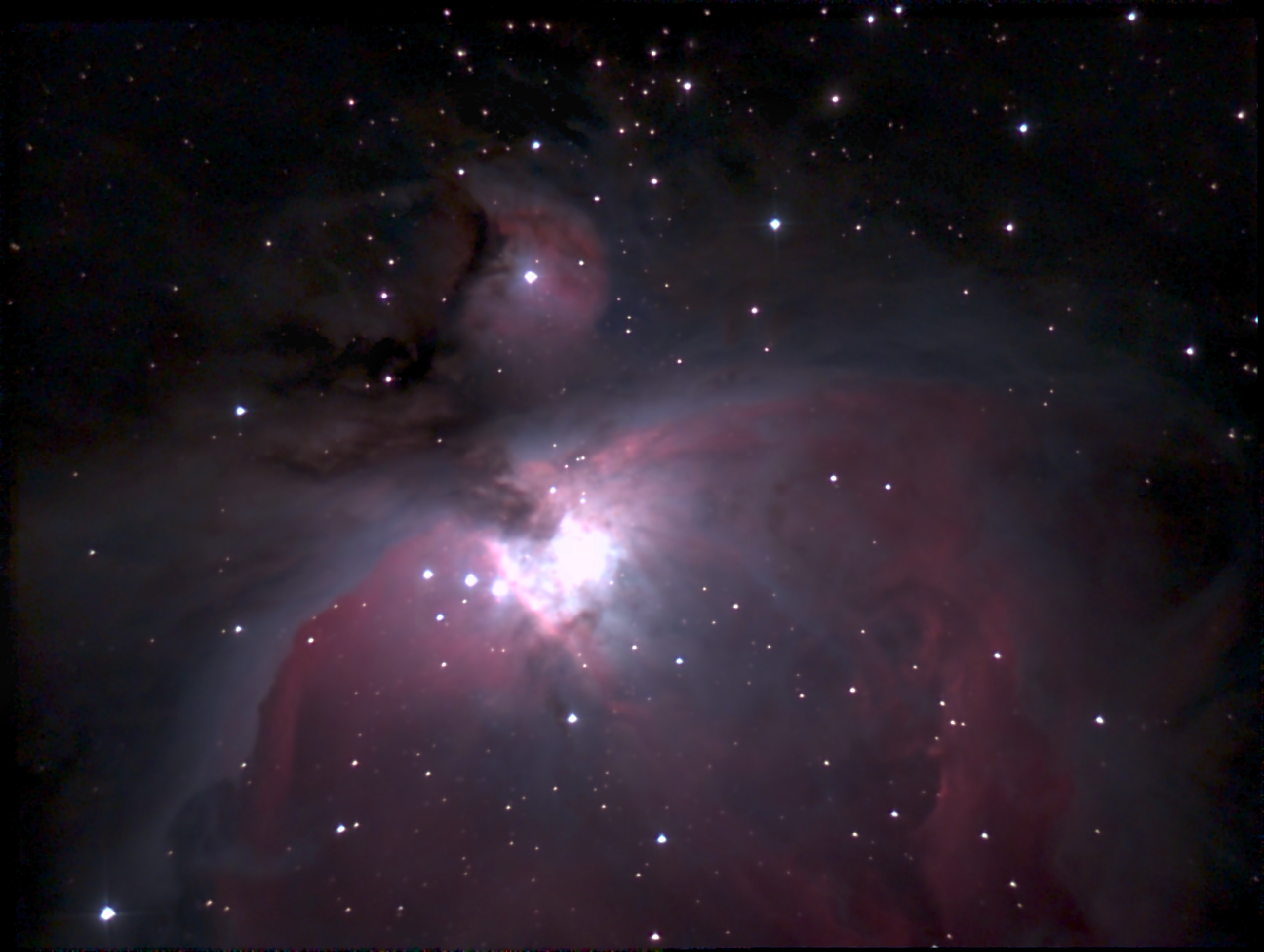
An eVscope image of the Orion Nebula
The Pinwheel Galaxy
A perfect example of a spiral galaxy, amateur astronomers can see the Pinwheel Galaxy’s arms spread tens of thousands of light-years out into the cosmos. With a Unistellar telescope, you’ll be able to appreciate its shape.
Also called M101, the Pinwheel Galaxy is located about 25 million light-years from Earth and can be found in the constellation of Ursa Major.
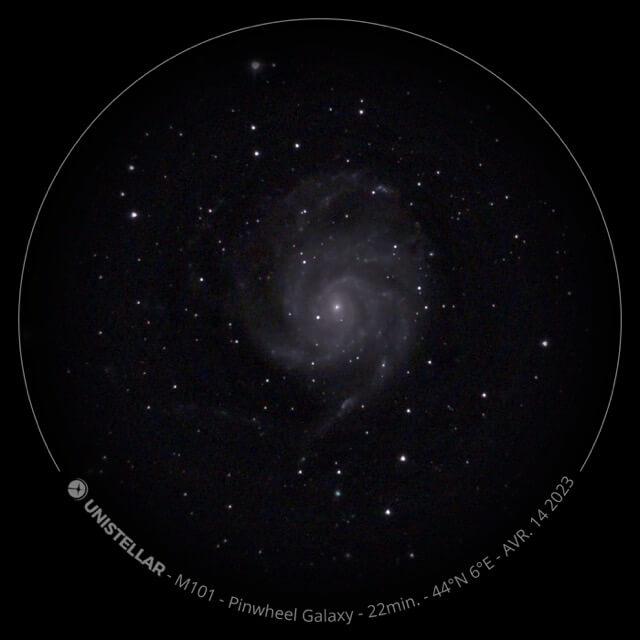
Image of the Pinwheel Galaxy captured by a Unistellar eVscope 2.
We encourage you to share your observations and join the conversation through our Facebook, Instagram and Twitter pages using the hashtag #UnistellarTopTargets
If you’d like to send us your observations by email, send them to [email protected].
Clear skies! 🔭
Further readings
Titan’s shadows
Every month, discover three unmissable celestial events to observe with your Unistellar telescope.
3 Reasons to observe this month
Every month, discover three unmissable celestial events to observe with your Unistellar telescope.
Unistellar Community Included In Multiple Scientific Papers
Did you know Unistellar Citizen Astronomers are often cited in published scientific papers? Find out how you can contribute too!
When Is the Next Solar Eclipse, and How to Observe It With a Unistellar Telescope
An annular solar eclipse is visible from the Americas on October 14. Learn how to witness the Ring of Fire with your Unistellar Telescope!
Halloween Observing Guide: Spooky Deep-Sky Objects
These Halloween deep-sky objects will add some light to those dark, spooky nights. Treats, tricks, and telescopes await!
How Big Is the Solar System?
If the Sun were the size of a basketball, do you know how big the Earth would be? Find out how big the Solar System really is!
